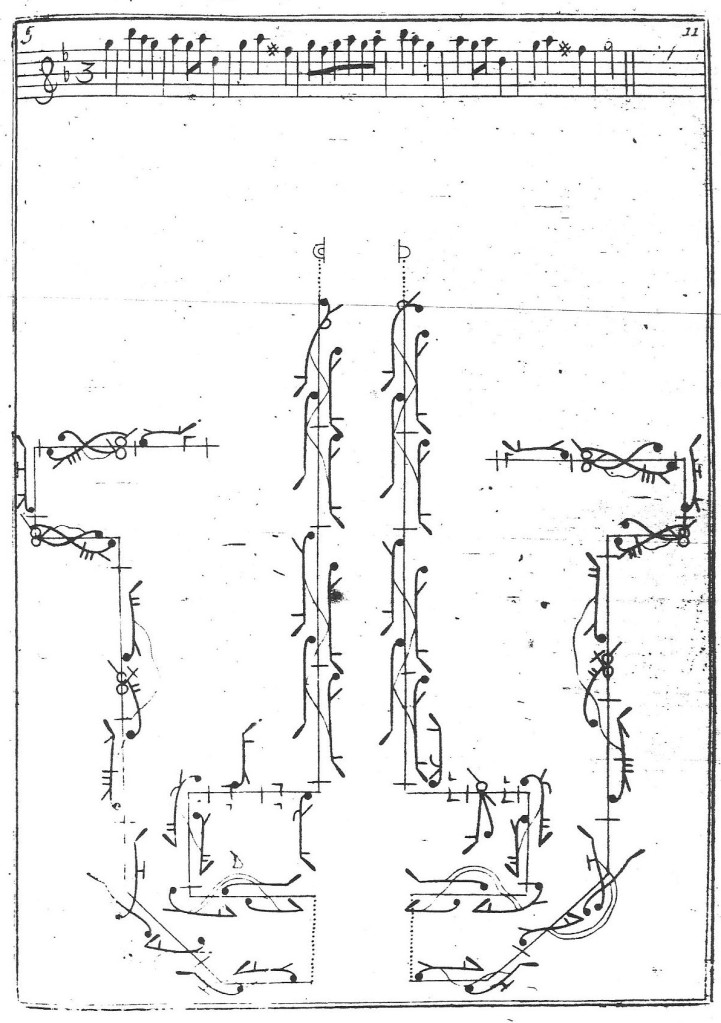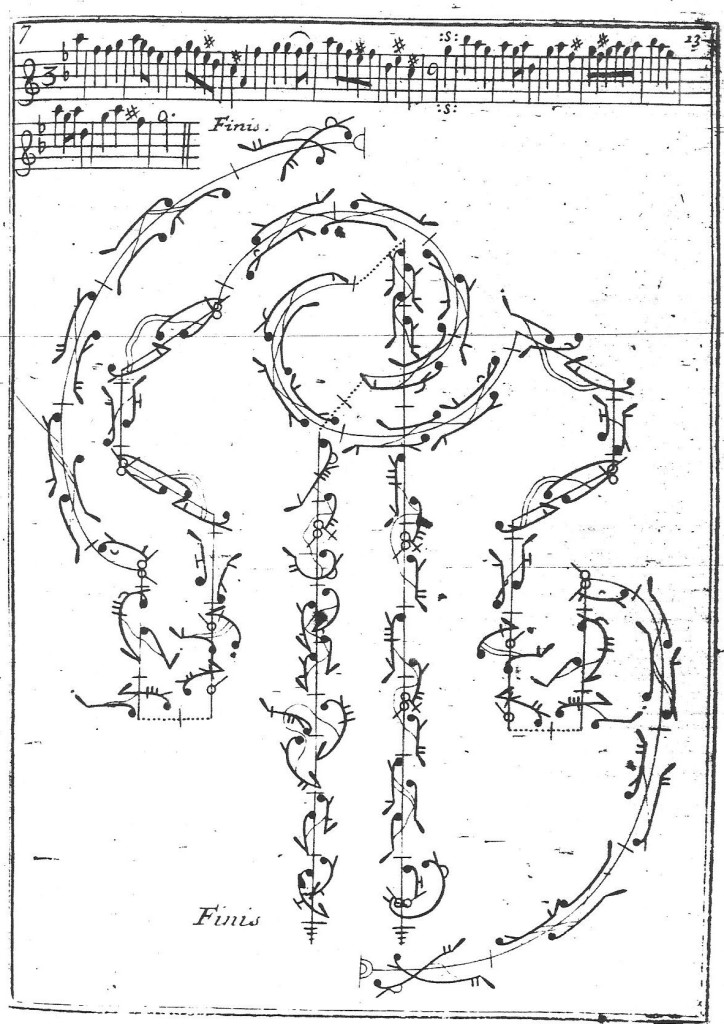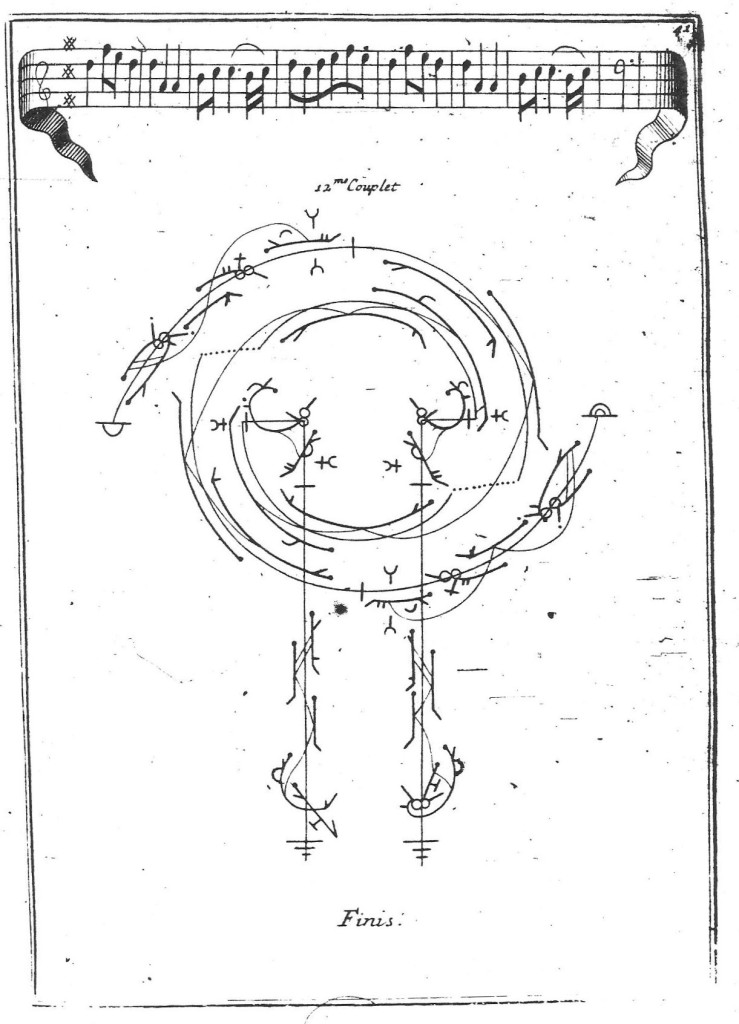Four of Mr Isaac’s duets published in notation include minuets:
The Rondeau and The Britannia from A collection of ball-dances perform’d at court published in 1706. The Rondeau may date to 1693, while The Britannia was danced in celebration of Queen Anne’s birthday in 1706.
The Marlborough, apparently not published until 1710 although it was a ‘new dance’ in 1705 when it was performed to celebrate Queen Anne’s birthday.
The Royal Portuguez, a ‘New Dance made for her Majesty’s BirthDay’ in 1709 and published the same year. The title may refer to Maria Anna of Austria, who was escorted to Portugal in an English navy vessel for her marriage to João V of Portugal in 1708. She arrived at Spithead from Holland on 24 September 1708 in the Royal Anne.
I am reconstructing these minuets from their notations and all are springing surprises. Here, I will look at them in order of their dates of composition.
The Rondeau
In this duet, the musical structure of the concluding minuet reflects that of the preceding triple and duple time sections. It, too, is a rondeau, running AABACAA (A=B=C=8) and so has 56 bars in 3/4 time. The dance notation is also barred in triple time.
Only about a third of the steps in this minuet are recognisable as belonging to the vocabulary reserved for the dance type. There are some conventional pas de menuet and contretemps du menuet (notated as if in 6/4, but with a bar line part way through the step). There are also some ‘Grace’ steps, or variants of these. I will return to Isaac’s steps more generally towards the end of this post.
It is generally accepted that the partners in a ballroom minuet both begin their steps on the right foot and maintain this throughout the dance. In The Rondeau, as in his other minuets, Isaac ignores this convention at will. The minuet begins with the couple facing one another across the dancing space, before they turn to dance two pas de menuet upstage side-by-side and then turn to face one another again with a pas balancé. They only turn to face the presence as they change to mirror symmetry (the first of two such sequences) and perform two jettés backwards. This change gives the woman a contretemps du menuet on the left foot, shown in this first plate of the minuet.
The first floor patterns on the next plate could be interpreted as a variation of the ‘Z’ figure, as the couple face one another and move apart sideways, before returning on the same line and then passing right shoulders – all of which is done on an orientation which has been moved through forty-five degrees so it is sideways on to the presence. At the end of the dance, shown in the plate below, the figure resembles the taking of both hands (although no hand holds are included in the notation) before a final retreat with the man moving backwards and the woman forwards in more conventional minuet steps.
The Marlborough
In this dance, ostensibly created just a year before The Britannia, it is not easy to see the triple-time section as a minuet. The musical structure is difficult to analyse. It seems to be AABACBAC (A=4 B=8 C=4), but (as a non-musician) I am happy to be corrected on this. There are, in any case, 40 bars of music. The minuet follows a march, to which the choreography returns for a final reprise.
The dancers begin facing one another on a right line, the man backing the presence, and they travel backwards away from one another with steps that can perhaps be interpreted as a variation on the pas de menuet. None of the subsequent figures seem to make any reference to the conventional figures of the minuet and few of the steps clearly seem to be variants of minuet steps, although several resemble those in Isaac’s other couple minuets. In the final figures, before the return to the march, both travel sideways upstage with contretemps and pas de bourrée before facing each other on a diametrical line for pas de sissonne and coupé variants. They end facing each other ready to begin the last duple-time section. Here are the opening and conclusion of the minuet in The Marlborough.
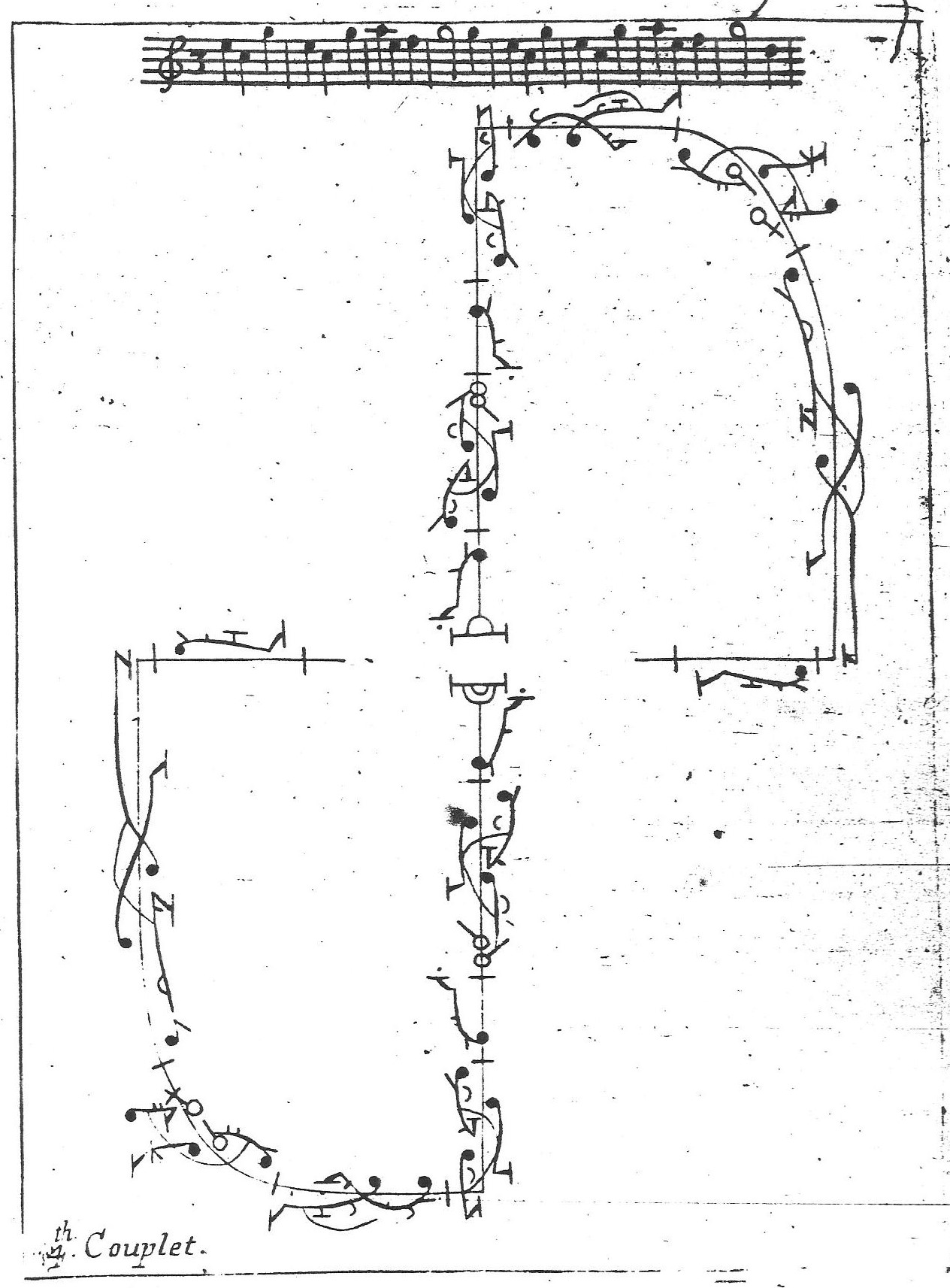
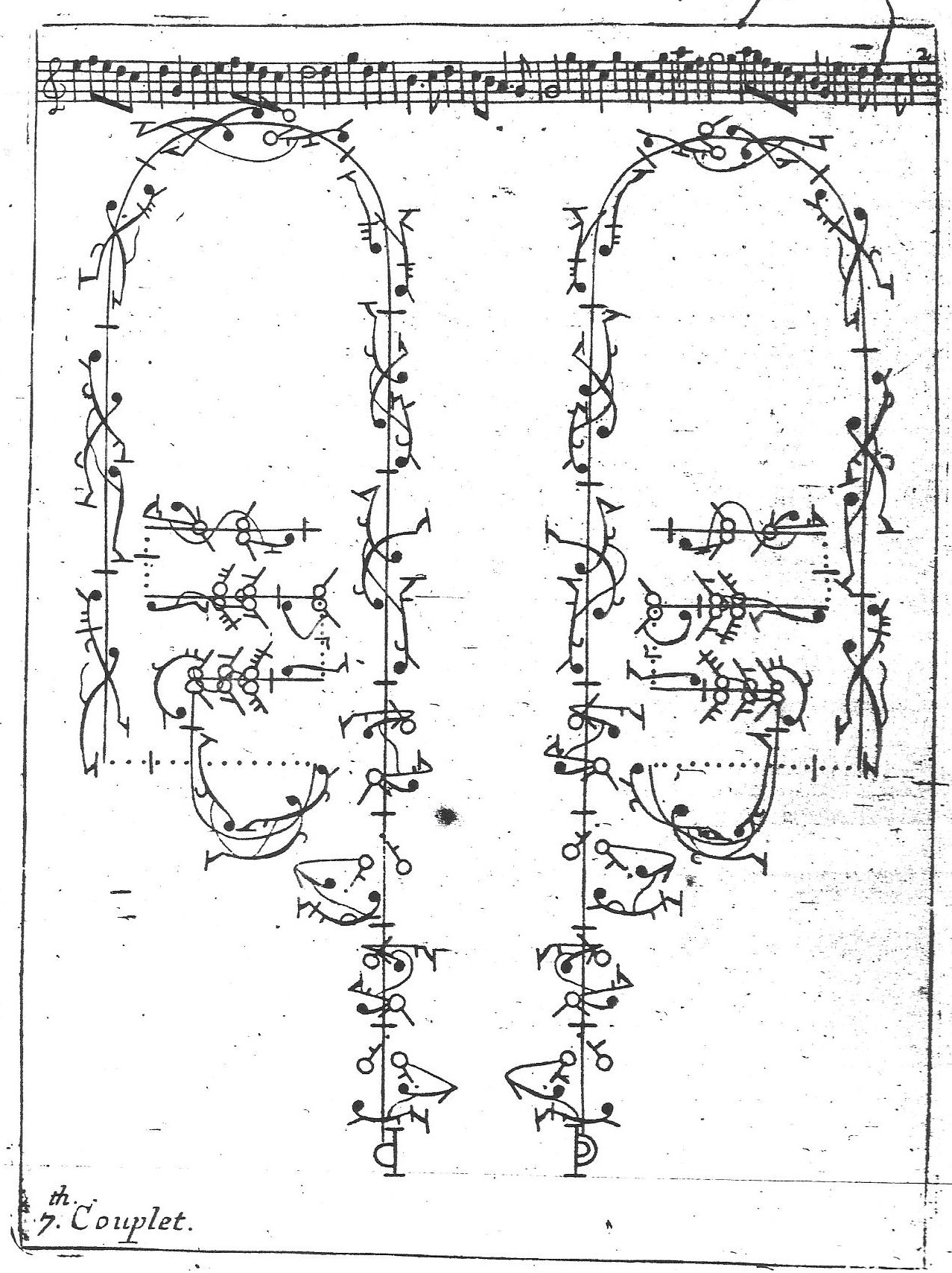
The Britannia
Like The Rondeau, Isaac’s The Britannia has the musical structure AABACAA (A=B=C=8) although in this case neither of the preceding sections – in triple time followed by a bourrée in duple time – are musical rondeaus. Although the music is written in 3/4, the dance notation is actually barred in 6/4. There are 56 bars of triple time music. About a third of the steps can be recognised as pas de menuet and contretemps du menuet, although in The Britannia these are mostly in variant form.
The minuet section begins with the couple facing one another across the dancing space and then moving diagonally, the man downstage and the woman upstage, to end facing one another on a right line with the man backing the presence. In much of The Britannia, the partners are on the same foot, but there are two sequences in mirror symmetry. One comes on plate 10, following a short sequence with faint echoes of the ‘Z’ figure, while the other is in the closing bars immediately after the couple have taken both hands. Here is the final sequence, which differs from a conventional minuet in that both the man and the woman are travelling forwards towards upstage.
The Royal Portuguez
This is the latest of Isaac’s ballroom dances to include a minuet, although it comes only three years after The Britannia (Isaac would continue to create ballroom dances until at least 1714). It follows a loure, which resembles one of the ‘Spanish’ loures to be found in the French repertoire of notated dances (rather than Pecour’s Aimable Vainqueur or Isaac’s The Pastoral, both of which could be described as ‘French’). The loure is, perhaps, meant to honour the new Queen of Portugal, for whom the dance is named. The minuet has a musical structure AABB (A=8 B=12) which is rather different from the other three couple minuets, and the dance notation calls for ‘Brisk Minuet time’. Both the music and the dance notation are barred in triple-time and there are 40 bars altogether.
If its steps are unconventional, the figures of the minuet in The Royal Portuguez at least refer to some of the expected figures of the minuet. It begins with the couple side-by-side facing the presence for a passage on a right line downstage (with steps that might be construed as variants on the pas de menuet, although the dancers are in mirror symmetry). They briefly face each other before turning back to the presence and then travel sideways away from each other on a shallow diagonal. Apart from this opening sequence and another to end the dance, the couple dance on the same foot throughout. A couple of the figures hint at the ‘Z’ figure, although the dancers pass by left shoulders. The final figure begins with the couple facing one another on a diametrical line before travelling on a circular path anti-clockwise. They take hands as they perform a variant on the pas de sissonne to face one another on a right line, before a very short passage upstage to finish. Like The Marlborough, there is little to underline that this is a minuet. Here are the opening and closing plates of the minuet section of The Royal Portuguez.

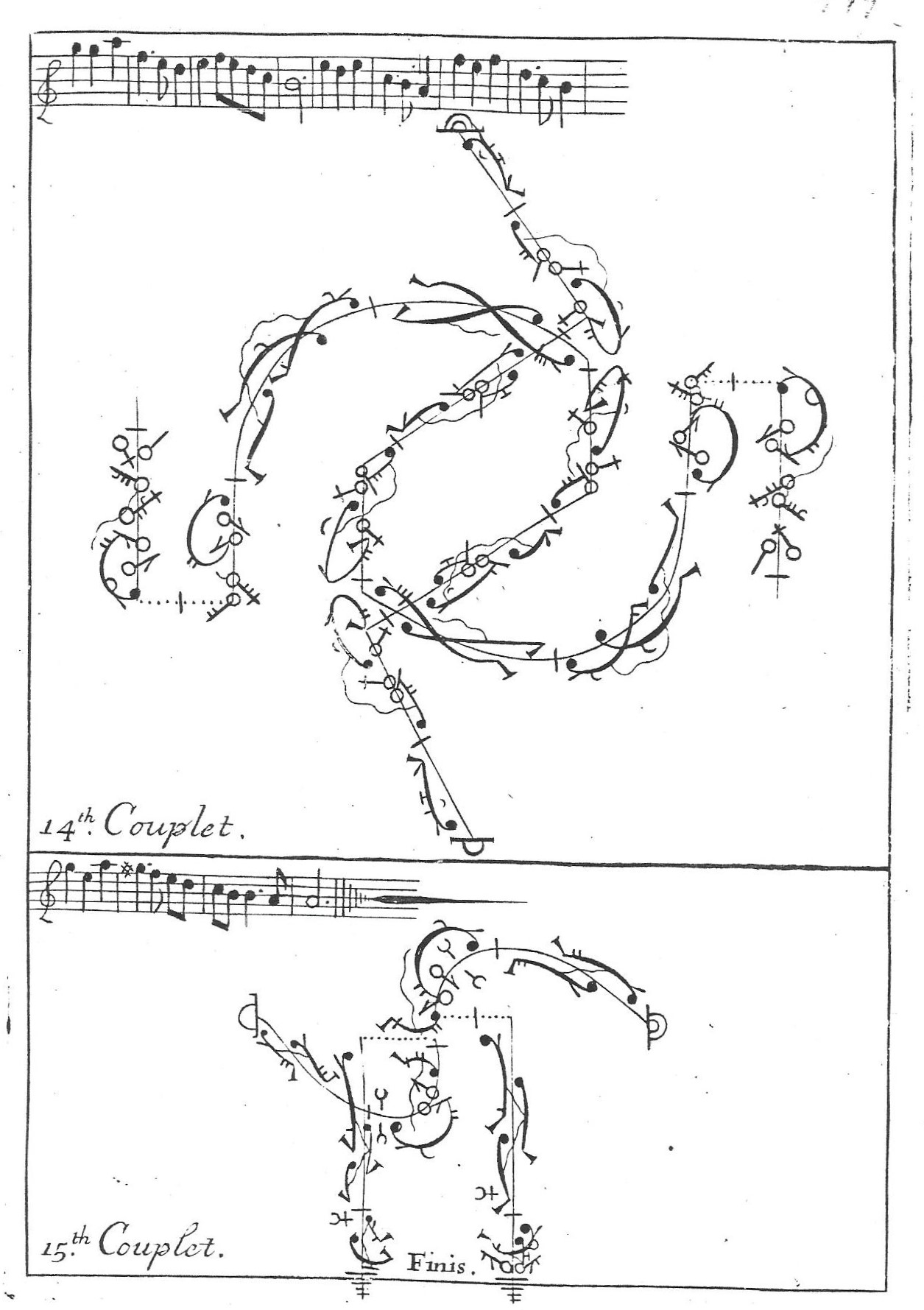
Mr Isaac’s ‘Minuet’ Steps
Mr Isaac does use recognisable pas de menuet – these have three movements ending with a demi-coupé – although only The Rondeau and The Britannia include them. The contretemps du menuet appears in the same two dances. There are occasional ‘Grace’ steps, a pas balancé in The Rondeau, a pas de courante in The Britannia and paired pas de bourrée in The Rondeau and The Marlborough. Isaac seems to have liked pas composé beginning with a jumping step and ending with a pas de bourrée, which provided him with a range of variations on the pas de menuet à deux mouvements. His most often used versions were:
- Two jettés and a pas de bourrée, which appears in The Rondeau, The Marlborough, The Britannia and The Royal Portuguez;
- A coupé followed by a pas de bourrée, which is used in The Rondeau, The Britannia and The Royal Portuguez.
Isaac also makes quite frequent use of the jetté-chassé as an element within a pas composé. Most of these are specific to the dance in which they appear, although a coupé followed by two jettés-chassé is used in both The Royal Portuguez and The Marlborough. The jettés-chassé themselves differ, in relation to the extension (or not) of the working leg), as shown in these versions from plate 8 of The Britannia (on the left) and plate 14 of The Royal Portuguez (on the right).

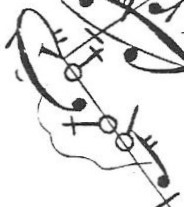
It is particularly interesting that the minuet sections of three of these dances – The Rondeau, The Britannia and The Marlborough – each have several steps that appear to be unique to them.
My work on Mr Isaac’s couple minuets has called into question much of what I thought I knew about this dance. These earlier minuets range far from the conventional steps and figures set out by Rameau in Le Maître à danser and Tomlinson in The art of dancing some decades later. What does this mean for our understanding of the minuet or, indeed, other dance types among the ballroom duets.

